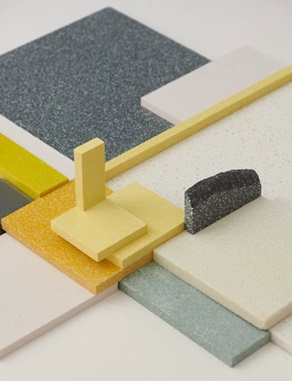 RALEIGH, N.C.—Durat Plus, developed by Durat, is the world’s first commercially available solid surface material combining recycled solid surface material and recycled resin. Traditional solid surfaces use two primary ingredients: the solid surface material itself (pigments, plastics, minerals, etc.) and the resin that binds it. Durat Plus can use any manufacturer’s recycled solid surface as a raw material. The resin is made from recycled PET plastic, as used in plastic bottles.
RALEIGH, N.C.—Durat Plus, developed by Durat, is the world’s first commercially available solid surface material combining recycled solid surface material and recycled resin. Traditional solid surfaces use two primary ingredients: the solid surface material itself (pigments, plastics, minerals, etc.) and the resin that binds it. Durat Plus can use any manufacturer’s recycled solid surface as a raw material. The resin is made from recycled PET plastic, as used in plastic bottles.
With both of the primary materials being recycled, Durat Plus contains up to 80 percent recycled materials. Its carbon footprint is half that of a traditional Durat, which contains up to 28 percent recycled material and is fully recyclable. Durat Plus has a distinctive appearance, which is different from the traditional Durat: the uniform base color is filled with speckles made of recycled solid surface. The new line launches with Durat Plus white, which has a fairly uniform overall appearance, with a very subtle texture.
Strengthening the Circular Economy
Over the past few years, Durat has invested heavily in in-house material development. Durat Plus is the first major result of a material development effort to improve the circular economy.
“The aim is to implement the circular economy more effectively in all operations and significantly reduce its climate impact. One of the ways to advance the circular economy is to increase the share of recycled materials. The objective is to make use of a wide array of pre- and post-consumer recyclable materials and develop a 100 percent closed material loop,” says Mervi Puska, Durat’s Materials Development Manager.
“Now that we also recycle other manufacturers’ surplus and end-of-life furniture, we will be able to have a much broader impact on the plastic waste problem,” says Heikki Karppinen, managing director of Durat.
Durat’s goal is to be carbon neutral by 2025 at the latest.






